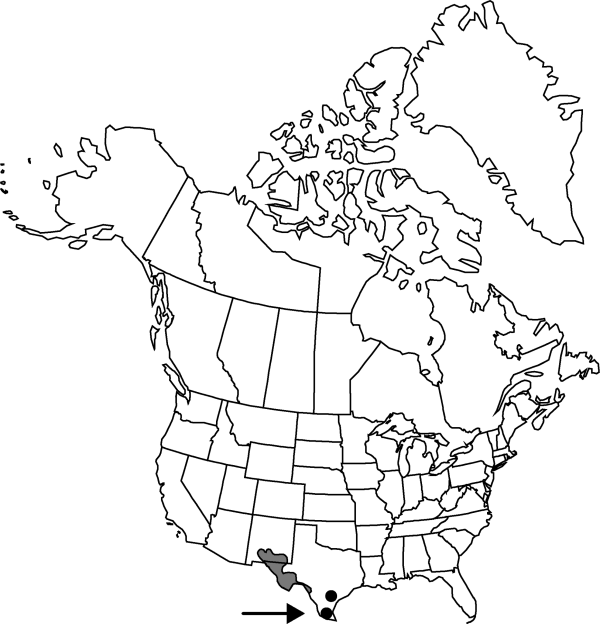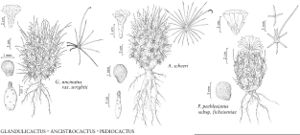Glandulicactus uncinatus var. wrightii
Cactaceae 5: 2925. 1961.
Stems: ribs protruding 9–15 mm, 6–10 mm wide. Spines straw colored to pale gray or some (especially proximalmost few of areoles) pink to reddish (rarely all reddish); radial spines (5–)8–10 per areole, abaxial 3 hooked, (11–)20–35(–47) mm, nearly as thick as central spines; central hooked spine 50–90(–130) × 0.5–1(–1.7) mm; others, if present, straight and poorly differentiated from adaxial radial spines. Flowers orange-red or reddish to purplish or brownish purple, usually dark or dull. Fruits: pulp mealy (funicular cells remaining intact, giving the fresh funicular surface a beaded appearance). Seeds: testa cells weakly to strongly convex. 2n = 22.
Phenology: Flowering Mar–May; fruiting May–Jun.
Habitat: Chihuahuan desert scrub, semidesert grasslands, limestone outcrops, sometimes igneous substrates or alluvium
Elevation: (100-)500-2000 m
Distribution

N.Mex., Tex., Mexico (Chihuahua, Coahuila, Durango, Nuevo León, Sonora, Zacatecas).
Discussion
The distinctiveness of Glandulicactus uncinatus var. wrightii was long obscured by misidentifications based on questionable differences in tepal shape. Glandulicactus uncinatus var. uncinatus has green fruits and is endemic in and around San Luis Potosí, Mexico south of var. wrightii; perhaps it is more similar to G. mathssonii (Berge ex K. Schumann) D. Ferguson from even farther south (Guanajuato).
Selected References
None.
